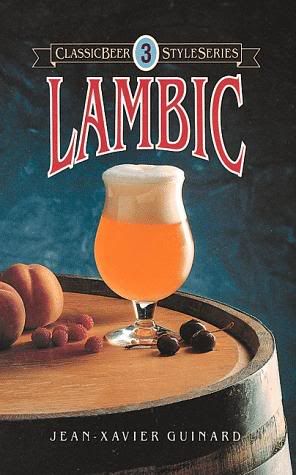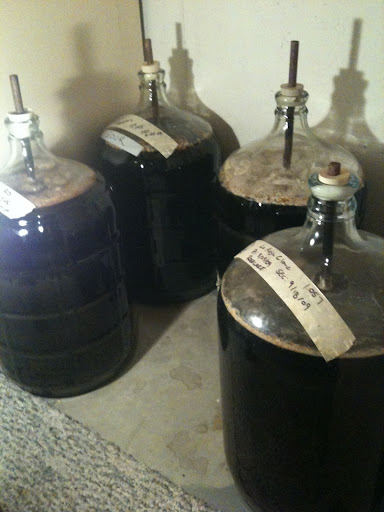Okay, there still seems to be a lot of confusion on these boards on what a lambic is/isn't and how to make one at home. This is a recipe from Jean Xavier Guinard. He's belgian, for one, so he knows a thing or two about beer. Second, he got his PhD from studying beer. Third, he literally wrote the book on brewing them at home.

This is a recipe from that book.
Notes:
This is for a 5 gallon cask.
Ullage is the beer that gets lost as foam from the fermentation. Yes, traditionally the bunghole of the cask is left wide open during the fermentation.
His recipes for fruit lambic are basically the same. He adds the fruit after primary fermentation, along with the bugs. He uses 10lbs of cherries (with pits!) for his kriek. For his frambroise, he adds 1 oz of vanilla extract, 8.5 lbs of raspberries and changes the hops to Saaz, Fuggles and Alsace.
At the time this book was written 'Sierra Nevada' yeast and lab cultures of pedio and brett were all that were available. I don't see why you couldn't use belgian golden ale and wyeast lambic blend, for example.

This is a recipe from that book.
Gueuze-lambic
by Jean Xavier Guinard
6.8 lbs klages pale malt
3.3 lbs wheat
0.5 lb crystal malt 40L
0.33 oz each fuggles, northern brewer, and bullion hops (3 years old)
Sacch. culture (Sierra Nevada ale yeast)
Brett. culture
Pedio. culture
Mixed sacch-brett-pedio culture for bottle conditioning
3/4 cup dextrose for priming
OG 1.053
FG 1.013
Boil: 2 hours
Primary (sacch.): 1 week at 63 F
Secondary (pedio and brett): 2 weeks at 69F, 4 weeks at 62F
Fermenter: oak cask
Mix 1.4 gallons of water with the wheat and 10% of the klages pale malt. In a cooker, bring to a boil after a ten minute rest at 158F. Boil for 30-45 minutes. Start the main mash by mixing 1.3 gallons of 130F water with the rest of the pale malt and crystal malts. Hold for 15 minutes at 140F. Drop the boiled adjunct into the main mash and hold at 158F for 30min and mash off at 170F. Slowly run off and sparge. Boil for 2 hours, adding hops early into the boil. Fill the cask with the cooled wort and inoculate with the sacch culture. After one week, inoculate with the pedio. culture and after 3 weeks with the brett culture. Make up the ullage in the cask every other weeks with fresh wort. Rack and bottle condition with the fresh mixed culture and dextrose for priming.
Notes:
This is for a 5 gallon cask.
Ullage is the beer that gets lost as foam from the fermentation. Yes, traditionally the bunghole of the cask is left wide open during the fermentation.
His recipes for fruit lambic are basically the same. He adds the fruit after primary fermentation, along with the bugs. He uses 10lbs of cherries (with pits!) for his kriek. For his frambroise, he adds 1 oz of vanilla extract, 8.5 lbs of raspberries and changes the hops to Saaz, Fuggles and Alsace.
At the time this book was written 'Sierra Nevada' yeast and lab cultures of pedio and brett were all that were available. I don't see why you couldn't use belgian golden ale and wyeast lambic blend, for example.




